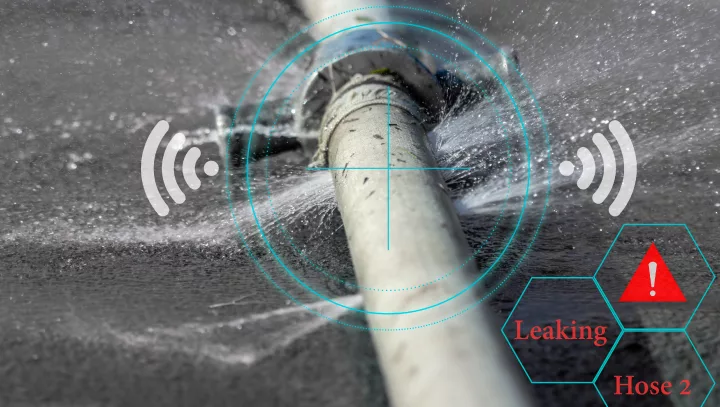Water Leak Detection: Exactly How to Identify and Fix Leaks Prior To They Cause Damages
Water Leak Detection: Exactly How to Identify and Fix Leaks Prior To They Cause Damages
Blog Article
Innovative Solutions for Very Early Discovery of Water Leaks in Buildings and Facilities
From advanced leak discovery modern technologies to the deployment of IoT sensors for real-time monitoring, the landscape of leakage avoidance is evolving rapidly. Automated water circulation evaluation systems are reshaping exactly how leaks are identified and addressed, paving the means for a positive approach to water leak detection.
Advanced Leakage Detection Technologies
Advanced leak discovery modern technologies, outfitted with sophisticated sensing units and algorithms, play a crucial role in promptly identifying and determining water leakages in different settings. These technologies utilize a mix of acoustic, thermal, and electromagnetic picking up approaches to discover leakages accurately. Acoustic sensing units spot the sound of escaping water, permitting precise localization of the leak resource. Thermal imaging detects temperature adjustments brought on by water leak, supplying another efficient approach for leak recognition. Electromagnetic sensors can identify changes in electromagnetic fields triggered by water, providing yet an additional layer of leak detection capacity.

IoT Sensors for Real-Time Tracking
In the world of contemporary water leak discovery, the combination of IoT sensors for real-time tracking represents a crucial development in improving positive leak discovery capacities. These sensors use constant tracking of water supply, providing real-time information on water flow prices, stress variations, and temperature adjustments. By leveraging IoT innovation, these sensing units can find also the tiniest abnormalities in water usage patterns, enabling very early identification of possible leaks prior to they intensify into significant concerns.
IoT sensors transfer information to a central platform, where sophisticated algorithms examine the information and create signals or notices when irregularities are detected. This real-time tracking capacity enables residential property proprietors or center managers to immediately attend to leaks, lessening water damages, decreasing repair work costs, and conserving water resources.
Furthermore, IoT sensors can be integrated with building monitoring systems, enabling for computerized actions to discovered leakages, such as turning off water valves or triggering pumps to mitigate the influence of leakages. On the whole, the execution of IoT sensing units for real-time surveillance dramatically improves the efficiency and efficiency of water leakage discovery in structures and facilities.
Artificial Intelligence Algorithms for Leak Forecast

One secret advantage of using artificial intelligence for leakage forecast is its capability to constantly learn and boost its precision over time. As more information is gathered and fed right into the formula, it can fine-tune its forecasts navigate to this website and adjust to changing you could try these out conditions, inevitably boosting the dependability of leak detection systems.
In addition, device discovering algorithms can assist in recognizing refined signs of leaks that might go undetected by conventional monitoring techniques. water leak detection. By evaluating complex data sets in real-time, these formulas can offer very early warnings and signals, allowing for prompt treatment and preventive upkeep to mitigate possible water damages and associated prices
Making Use Of Thermal Imaging for Leakage Detection
Thermal imaging modern technology provides an appealing approach for finding water leakages in different systems and facilities. By utilizing infrared radiation and temperature level differences, thermal imaging electronic cameras can recognize covert leakages that are not conveniently visible to the naked eye. When water leaves from pipes or frameworks, it often changes the temperature level of the surrounding area, developing temperature differentials that thermal electronic cameras can capture. These temperature abnormalities are then converted into noticeable images, highlighting the exact place of the leak.
One of the key benefits of thermal imaging for leak discovery is its non-intrusive nature. On the whole, the use of thermal imaging innovation improves the performance and accuracy of water leakage detection, making it an important tool for preserving the honesty of structures and infrastructures.
Automated Water Circulation Analysis Solutions
Just how can computerized water circulation analysis systems reinvent the detection and administration of leakages in numerous systems and infrastructures? Automated water flow analysis systems supply a positive strategy to leak detection by continuously checking water flow prices and patterns. By establishing standard data, these systems can swiftly determine inconsistencies that might indicate a leakage, making it possible for timely intervention to avoid substantial damage.
These systems make use of advanced formulas to examine real-time information and offer prompt signals when anomalies are discovered, permitting swift action to be taken. Additionally, computerized water circulation evaluation systems can be Extra resources incorporated with building administration systems or IoT systems, enhancing total effectiveness and making it possible for remote surveillance capabilities.
Furthermore, the information accumulated by these systems can be used for predictive upkeep objectives, aiding to determine prospective powerlessness in the framework before leakages take place. Generally, the implementation of automated water circulation evaluation systems can considerably enhance leakage detection and administration techniques, ultimately bring about cost financial savings, decreased water wastefulness, and enhanced sustainability in buildings and infrastructure.

Conclusion
Finally, the integration of sophisticated leakage detection modern technologies, IoT sensors, equipment knowing formulas, thermal imaging, and automated water circulation analysis systems uses ingenious solutions for early discovery of water leaks in structures and framework. These technologies make it possible for real-time surveillance, forecast of leakages, and efficient detection approaches to stop water damage and waste. Applying these options can assist in preserving the honesty and sustainability of water systems in different settings.
Report this page